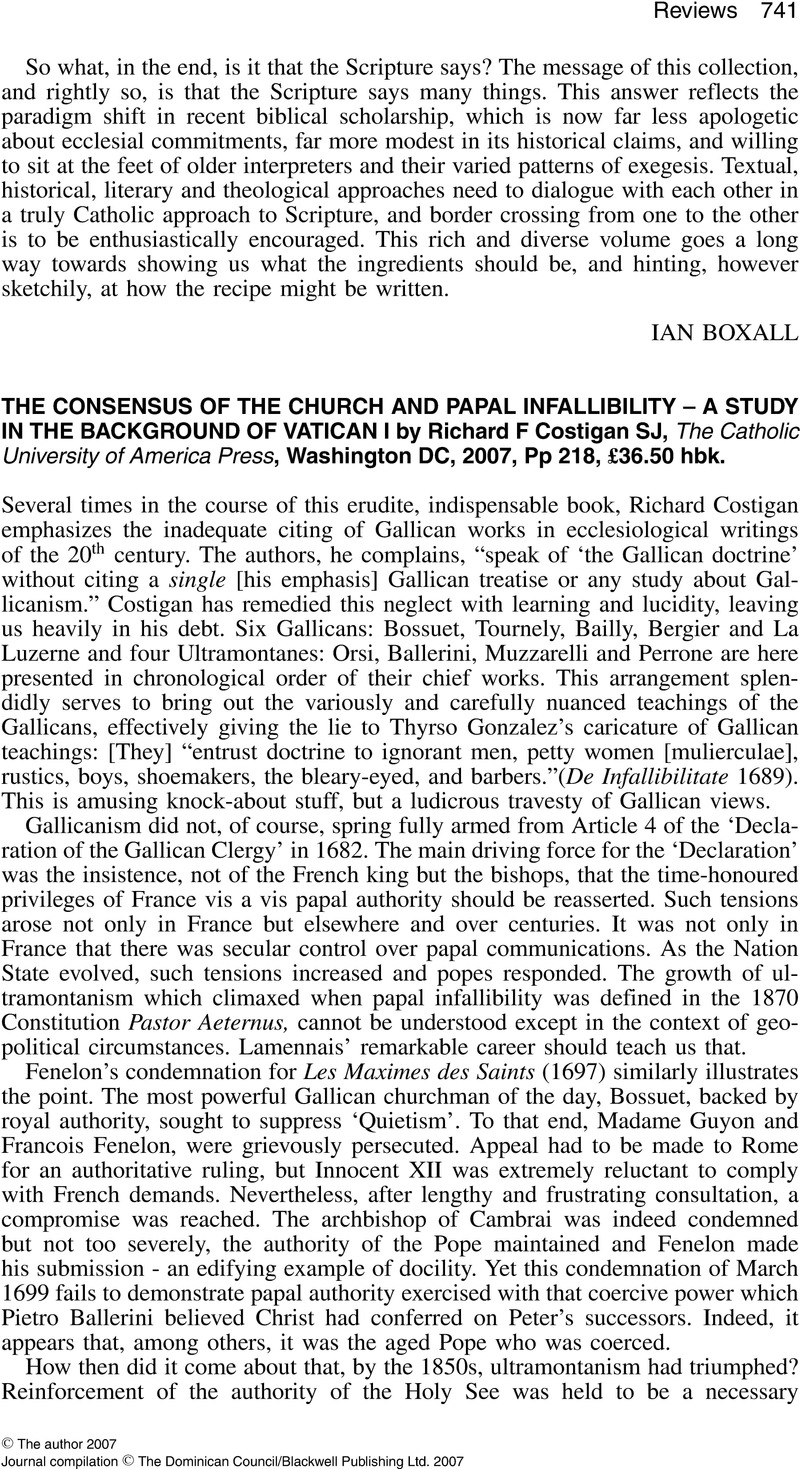No CrossRef data available.
Article contents
The Consensus of the Church and Papal Infallibility – A Study in the Background of Vatican I by Richard F Costigan SJ, The Catholic University of America Press, Washington DC, 2007, Pp 218, £36.50 hbk.
Review products
The Consensus of the Church and Papal Infallibility – A Study in the Background of Vatican I by Richard F Costigan SJ, The Catholic University of America Press, Washington DC, 2007, Pp 218, £36.50 hbk.
Published online by Cambridge University Press: 01 January 2024
Abstract
An abstract is not available for this content so a preview has been provided. Please use the Get access link above for information on how to access this content.

- Type
- Reviews
- Information
- Copyright
- Copyright © The author 2007 Journal compilation © The Dominican Council/Blackwell Publishing Ltd. 2007


